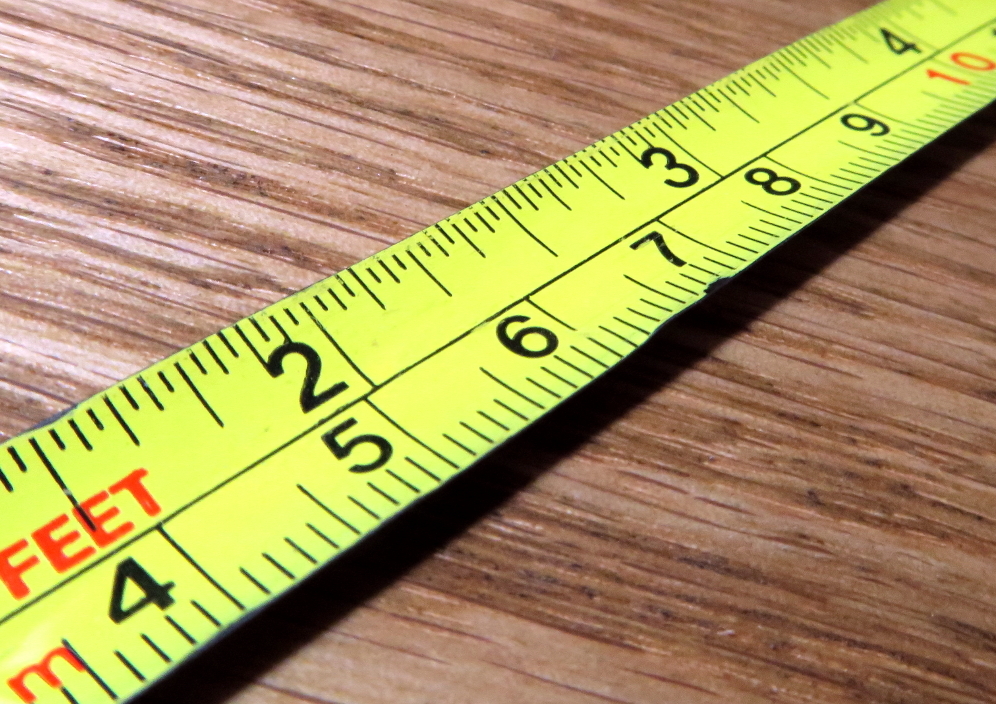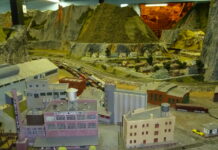
A tape measure is a great tool, which gets a lot of use around the house and garage for DIY projects. But climbing ladders and dragging a tape for projects can get old, which is why the best laser distance measurer may make a great addition to the tool box.
A laser distance meter uses a laser beam in determining the distance to a target. Typically they rely on a time-of-flight concept by sending a pulse towards the target object and using the time it takes the pulse to be reflected from the object back to the sender to calculate the distance.
Read customer reviews of the best laser distance meter in 2023 on Amazon.
Laser precision and range
Due to the tremendous speed of light (186,000 miles per second), and the straightness of lasers over short distances, a laser distance measurer enables quick and very precise measurements, often to within a fraction of a millimeter. They also can eliminate inaccuracies from sagging tape measures.
Range for laser distance measurers varies. Budget models may be only capable of measuring distances up to 65 feet, whereas top quality laser distance pointers may measure spans up to and beyond 660 feet.
When choosing a laser range finder, it is important to have a general idea of the distances you will be measuring. This may help determine the model you choose.
Budget models may be all you need if you are measuring around an average-sized house or your small business.
If your house is large with vaulted or high ceilings (say over 2,500 square feet) or you are trying to measure a longer distance, a mid-range model may suit your needs best.
For contractors, survey crews, and road workers, a high end laser distance meter may be the correct choice. These will measure distances that span hundreds of feet.
Going long
Over greater distances, triangulation and other techniques may be used in laser distance measurers. The phenomena known as the Doppler effect also lets lasers accurately measure velocity in moving from one point to the next.
In some devices the pulse may be coded to avoid jamming, such as in devices intended to foil the use of laser speed detectors by police.
The precision of most standard electronic tape measures depends on the accuracy of the laser pulse and the speed of the receiver.
Very short laser pulses and fast detectors can gauge object distance to within a few millimeters even over distances of many yards.
Range is limited by the fact that even a focused beam of light will began to diverge due to the diffusion of light through differences in the gases of the air, which may be microscopic in size or miles high, but act as inefficient lenses.
These distortions can make it difficult to get accurate readings of objects occluded by bushes, in unusual weather conditions, or long distances in the open where temperature gradients occur, such as desert terrain.
How are laser range finders used?
Under normal working conditions, you merely have to point the object at a target, such as a pole or wall, and the distance will be indicated on an LCD screen.
Most devices can also translate this into different units of measure as needed. This saves a tremendous amount of time and effort for surveyors, construction crews, and other needs over the old-fashioned needs for long measuring tapes, measuring wheels, or even traditional surveying equipment.
Some devices have built-in triangulation features, often called “Pythagoras” after the Greek mathematician. This automatically calculates the third side of a triangle. Taking measurements at one utility pole and then a second, and simply hitting a button, will produce a measurement giving the distance between the two. Other devices may require three-point calculation rather than two.
Accuracy matters
Manufacturer accuracy ratings vary between models and brands.
Many models are accurate to +/- 1/16 of an inch, with others accurate to +/- 1/32 of an inch. On the lower end, budget tools may not be as precise, with measurements within +/- 1/4 of an inch or +/- 1/8 of an inch.
Depending on your needs, the tool’s precision should be accounted for before making a purchase.
For general carpentry, construction, and DIY, accuracy to 1/16 of an inch may be sufficient. A model with accuracy to 1/32 of an inch may be more suited for tasks that require precision — laying pipe or foundations, for instance.
Also, accuracy may depend on how securely the device is positioned or controlled. Obviously hand-pointed scanners will be less steady than those mounted on a tripod pivot.
For limited range work, however, laser range finders are incredibly useful objects which can take accurate measurements simply by laying them on a solid surface.
What you should look for in a laser range finder
Before purchasing a laser distance measurer, you should first compare the range or distance limitations given by the manufacturer compared to actual needs.
For example, the needs of a survey team planning a new runway or a contractor building a new addition could require different devices for accurate measurements.
Many are compact enough to fit neatly into a pocket. Small size allows carpenters, roofers, and others the mobility to take faster and more accurate readings than they could get from tape measures. In turn, this can provide considerable savings in time and potentially use of materials.
This can help not only in the actual work but in estimates depending on length and angles.
Among the many standard features which you might find beneficial are:
Mute option – many laser devices make beeping noises that can be disturbing to clients or passers by. The ability to silence the sounds may be important.
Long range – definitely look for a model that will cover the greatest distances you’re likely to encounter in your work.
While any LMD is faster than a tape measure, trying to gauge mobile or multiple targets could be a problem if there’s much wait time between readings.
Durability – most needs for laser devices involve construction where they might be subject to abuse from weather, dropping, or accidental bumps.
Calculations – For general carpentry and around-the-house DIY, the big three measurements you may need are distance, area and volume.
- Distance is a standard measurement between points. It is essential when measuring the width of a door sill, for instance.
- Area calculations will provide you with surface area. For instance, this is helpful when buying paint for your walls. If you know the surface area (square footage) of the walls, you will know how much paint to buy based on that calculation.
- Volume calculations account for the length, width, and height of a space. This is helpful if you are pouring concrete so you know the cubic feet of material needed.
Other functions
Laser distance meters may have other complex functions. A few include Bluetooth connectivity, memory, inclinometer, along with:
Continuous measuring, such as measuring point A to point B and then changing to a new point B
Multi-surface measurements
Single indirect, double indirect, and combined indirect / Pythagoras measuring: Indirect measuring is based on the Pythagoras theorem, which is a² + b² = c². The theorem allows you to get the measurement of the third side of a triangle when you only have two of the sides. A laser measurement tool that can calculate the missing distance can be helpful when doing vertical or horizontal surface dimensions.
Stake out functions work well when installing a fence or any task that requires intervals being staked out.
Batteries
Because laser distance meters are used in the field, they need a self-contained power source. Batteries are that source.
Cost
Of course, a laser distance measurer is also more expensive than a standard tape measure, so there’s no point in running out to buy one if you don’t truly need it or can’t afford it.
But where distances are great enough or fast, non-intrusive measuring is crucial, a laser device is a valuable asset that’s likely to pay for itself eventually in the time and work that it saves.
Since lasers range finders have no moving parts and are often designed with a rugged construction, they can last a long time and afford years of accurate usage – far more than a tape measure, which can rust or bind up if collecting dirt or dust.
In the end, the laser measuring device you choose will be dependent on power, budget, and your own needs.
Find the best laser distance measurer on the market on Amazon.
Originally posted 2023-01-06 07:02:31.


